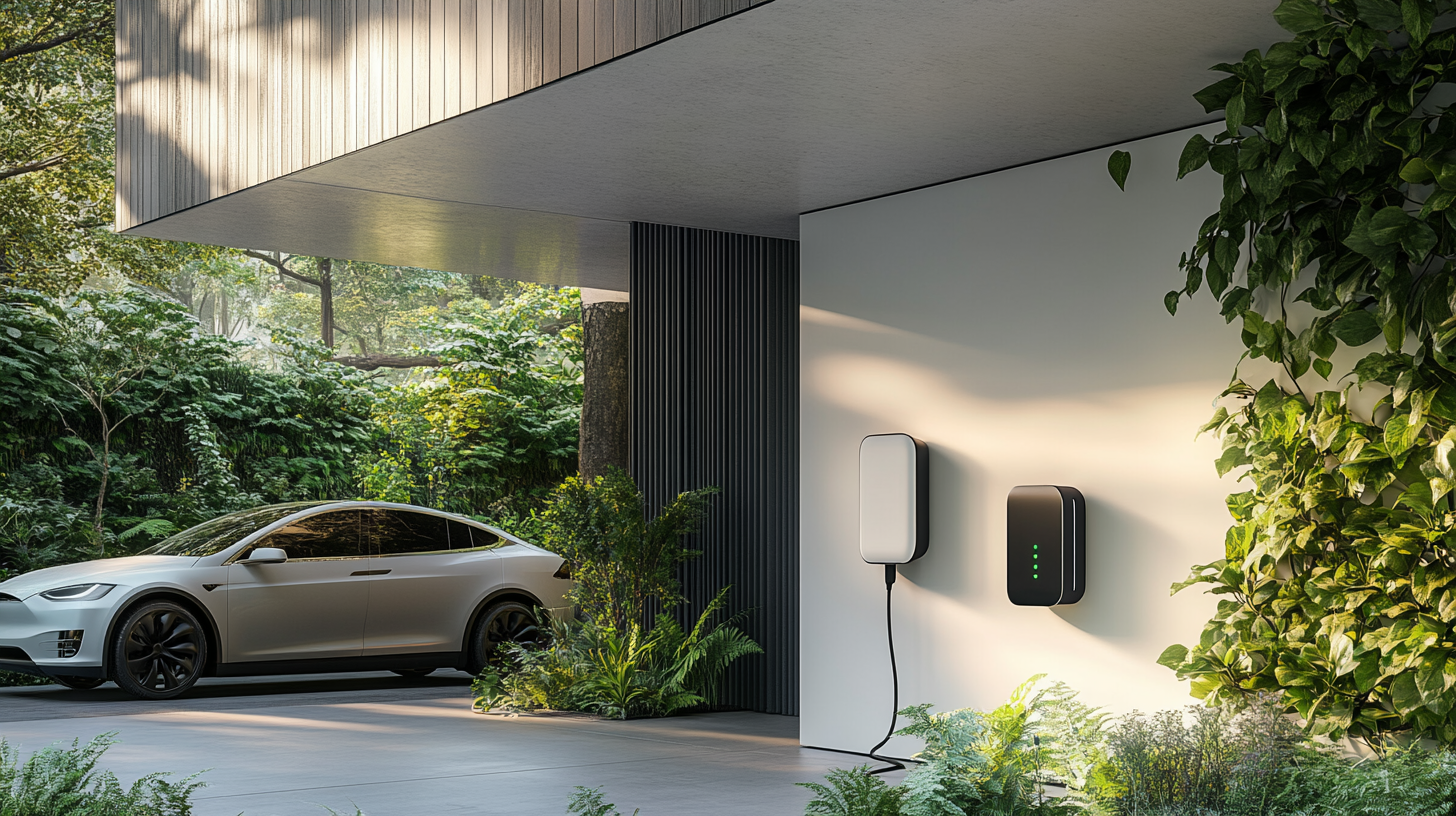As electric vehicles (EVs) continue to gain popularity, ensuring that your home is equipped with the right charging solutions has become increasingly important. One pivotal component of this is the Home AC WallBox Charger, a device that allows you to efficiently and conveniently charge your EV at home. However, with a variety of options available on the market, selecting the ideal charger can be overwhelming. Factors such as charging speed, installation requirements, and additional features must be considered to optimize your EV charging experience. In this blog post, we will provide you with five essential tips to help you make an informed decision when choosing the right Home AC WallBox Charger, ensuring that your home setup meets your needs and preferences. Whether you're a seasoned EV owner or new to electric vehicles, these insights will guide you in selecting a charger that complements your lifestyle and vehicle specifications.

When selecting the right home AC WallBox charger, it's crucial to consider several key factors that can influence your charging experience. First, evaluate the charging speed; a higher kilowatt (kW) rating typically means faster charging, which can be vital for those with limited time. For instance, many homes utilize chargers in the 7.2 kW to 22 kW range, where models offering 22 kW can fully charge most electric vehicles in about 3 to 5 hours, as indicated by recent industry reports.
Next, take into account the compatibility with your electric vehicle model. Not all chargers are universally compatible, so it’s essential to check that the WallBox charger supports the connector type used by your vehicle. In Europe, the market has seen a significant shift towards standardized connections, but verifying this compatibility is still key to ensuring seamless charging. Additionally, consider the cost-effectiveness of your charging options; recent analyses noted that as electric vehicle purchase prices decrease, the ongoing costs of charging will become increasingly critical for consumers' decision-making. Thus, choosing a charger that maximizes efficiency can help minimize long-term expenses.
This bar chart illustrates the importance level (on a scale of 1 to 10) of various factors to consider when selecting a home AC WallBox charger. The key factors include efficiency, cost, installation, compatibility, and additional features.
When selecting a home AC wallbox charger for your electric vehicle, understanding the different charging speeds is crucial. Charging speeds can significantly affect how quickly you can power up your vehicle, and this can vary widely depending on the wallbox type. Level 1 chargers, which use standard household outlets, typically deliver about 1.4 kW, making them the slowest option. While convenient for overnight charging, they might not be suitable for daily use if you rely on your vehicle frequently.
In contrast, Level 2 chargers, which are designed for home installation and usually require a dedicated circuit, can provide charging speeds ranging from 3.8 kW to 22 kW. This higher output can fully charge your vehicle in a matter of hours, making it the preferred option for most electric vehicle owners. Additionally, understanding the importance of charging speed can help you plan your daily routines around your charging needs, ensuring you always have enough power to get on the road without unnecessary delays.

When choosing a home AC WallBox charger, ensuring compatibility with your electric vehicle (EV) model is paramount. A report from the International Energy Agency (IEA) indicates that compatibility issues can lead to significant charging inefficiencies, often wasting potential energy use by 30% or more. Major EV manufacturers like Tesla and Nissan offer different connectors and specifications, so verifying the charger's specifications against your vehicle's requirements is crucial. For instance, Tesla vehicles utilize a proprietary connector, while many other EVs conform to the J1772 standard.
One essential tip is to check the power output of the WallBox charger. Many modern electric vehicles are capable of accepting higher charging rates, but using an incompatible charger may mean missing out on rapid charging capabilities. Look for chargers that provide adjustable power settings; this can help maximize efficiency and adapt to both current and future EV models. Additionally, consulting EV owner forums and manufacturer guidelines can offer insights into common compatibility issues and shared user experiences.
Another aspect to consider is the software integration of the charger. According to a study by BloombergNEF, smart chargers that communicate with your car can optimize charging times to coincide with energy costs and grid demands. Therefore, selecting a WallBox charger that offers smart features can enhance not just compatibility but also overall functionality, ensuring that your vehicle charges efficiently and cost-effectively.
When considering the installation of a home AC WallBox charger, evaluating the installation requirements and associated costs is critical. First, assess your home's electrical capacity. It's essential to determine whether your current electrical system can handle the added load from the charger, which may require a professional electrician to upgrade your panel or wiring. This step not only ensures safety but also maximizes the efficiency of your charging setup.
Next, factor in the location for installation. The proximity of your charger to your electrical panel can significantly influence installation costs. A shorter distance generally results in lower labor costs. Additionally, explore potential permits or assessments from local authorities, as these may incur extra fees and impact your overall budget. By carefully analyzing these installation requirements and costs, you can make a well-informed decision that aligns with your home energy needs and financial considerations.
When choosing the right home AC wallbox charger, it's essential to explore the smart features that can significantly enhance your charging experience. Smart chargers come equipped with advanced functionalities that help optimize energy use and reduce costs. For instance, chargers that offer solar energy integration allow users to harness renewable energy, further aligning with eco-friendly practices. This feature can be particularly beneficial for EV owners who wish to maximize their sustainability efforts while minimizing their electricity bills.
Another critical aspect to consider is real-time energy management. Some smart chargers now offer Power Boost features that monitor your home's energy usage, ensuring that charging happens at optimal times without overloading your system. This can be a game changer for households looking to balance their energy consumption efficiently. Additionally, these chargers often come with user-friendly apps that give you control over charging schedules and settings right from your smartphone, making the entire process seamless and convenient.
Finally, when selecting a wallbox charger, it's valuable to look for brands that consistently introduce innovative features tailored for the evolving needs of EV drivers. As the market grows, new chargers are continually being developed with enhanced smart capabilities, ensuring you make a savvy investment for your driving needs in the long run.

